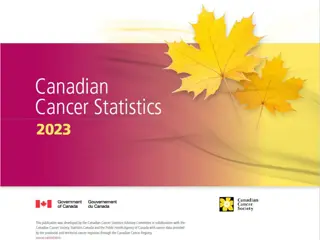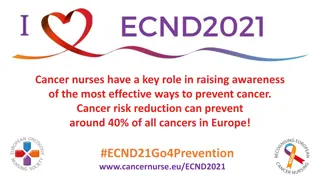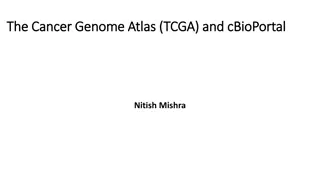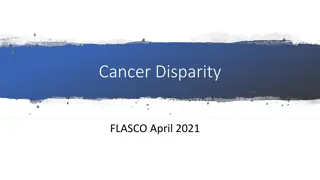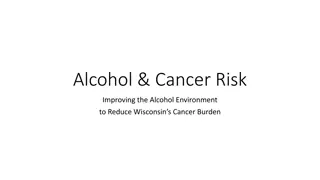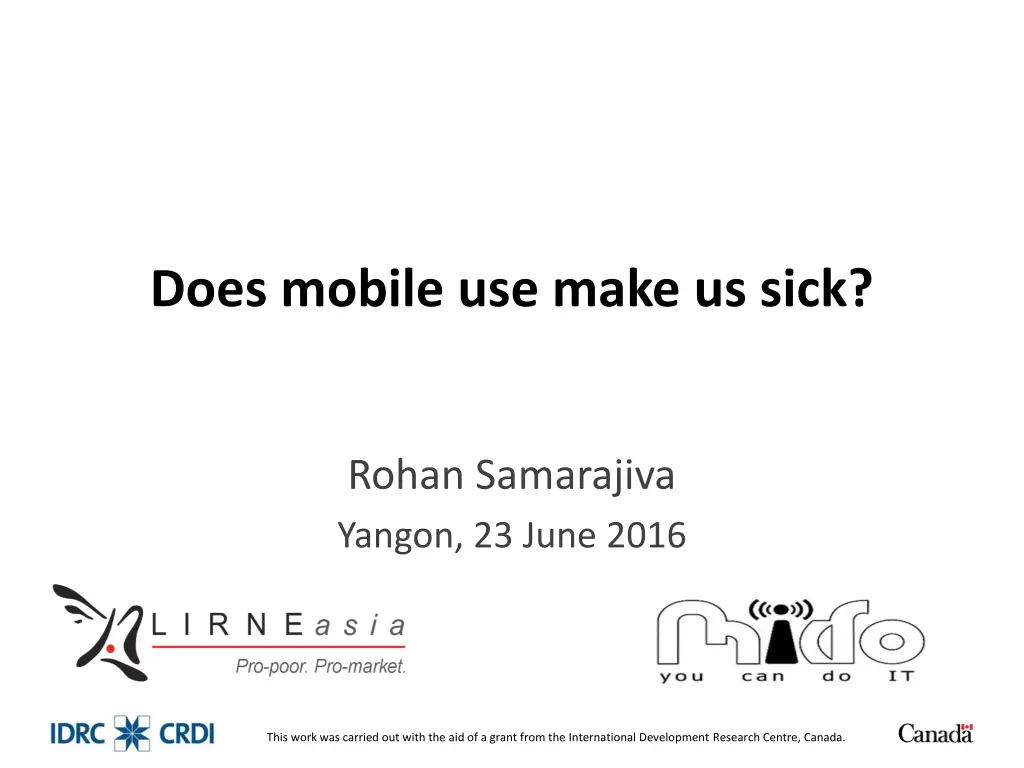
Mobile Use and Health: Examining the Evidence from Experts
Explore the impact of mobile phone use on health, specifically focusing on the concern of cancer caused by cellphones. Delve into the scientific insights provided by experts like Dr. Siddhartha Mukherjee, shedding light on the correlation between cellphone use and brain cancer. Discover how extensive research has shown no conclusive evidence linking cellphone radiation to increased cancer rates, debunking common misconceptions and fears.
Download Presentation

Please find below an Image/Link to download the presentation.
The content on the website is provided AS IS for your information and personal use only. It may not be sold, licensed, or shared on other websites without obtaining consent from the author. If you encounter any issues during the download, it is possible that the publisher has removed the file from their server.
You are allowed to download the files provided on this website for personal or commercial use, subject to the condition that they are used lawfully. All files are the property of their respective owners.
The content on the website is provided AS IS for your information and personal use only. It may not be sold, licensed, or shared on other websites without obtaining consent from the author.
E N D
Presentation Transcript
Does mobile use make us sick? Rohan Samarajiva Yangon, 23 June 2016 This work was carried out with the aid of a grant from the International Development Research Centre, Canada.
What people in Myanmar are experiencing is rapid change 2
Its natural to worry . . .. And for worry to be concentrated on cancer, the scariest of all diseases. 3
So let us look at evidence from an expert: Dr Siddhartha Mukherjee Assistant professor of medicine at Columbia University and staff physician at Columbia University Medical Center in New York City. His 2010 book, The Emperor of All Maladies: A Biography of Cancer was Awarded the 2011 Pulitzer Prize for General Non- Fiction Named one of the 100 most influential books written in English since 1923 by the magazine Time One of the 100 notable books of 2010 by The New York Times Magazine. A hematologist and oncologist, Mukherjee is also known for his work on the formation of blood and the interactions between the micro-environment ("niche") and cancer cells. Awarded fourth highest civilian award of India, the Padma Shri, in 2014. 4
Mukherjee (2011), Do Cellphones Cause Brain Cancer? If a cancer-causing agent increases incidence of a particular cancer in a population then overall incidence of that cancer will rise An aging population will seem more cancer- afflicted, even if real cancer incidence has not changed need for age adjustment From 1990 to 2002 the 12-year period during which cellphone users grew from 4 million to 135 million in US the age-adjusted incidence rate for overall brain cancer remained nearly flat 5
Correlation without a causal mechanism? In 2010, a larger study updated these results, examining 1992- 2006 trends and found no increase in overall incidence in brain cancer But if population sub-divided into groups In females ages 20 to 29 (but not in males) age-adjusted risk of cancer in front of brain grew slightly, from 2.5 cases per 100,000 to 2.6 These cancers appear in the frontal lobe a knuckle-shaped area immediately behind the forehead and the eye How, or why, would a phone s toxicity have skipped over the area nearest to it and caused a tumor in a distant site? Most epidemiologists and biologists do not find such a tissue-skipping mechanism plausible and most doubt that there is any causal link between frontal tumors and phones 6
Confusing correlations In 2010, Interphone, a study with 5000+ cases and controls from 13 countries ran for 10 years, raised even more puzzling issues No evidence for association between brain tumors and cellphones But when cancer and no cancer cohorts were subdivided according to frequency of mobile use There was an apparently decreased risk of brain tumors in regular phone users, compared with rare users or nonusers; regular cellphone use seemed to reduce the risk of brain tumors In stark contrast, very high cellphone use (measured as a user s cumulative call time) seemed to increase the risk of a particular subtype of brain tumor 7
Mukherjees conclusion . . little theoretical basis for anticipating that RF energy would have significant biological effects at power levels used by modern mobile phones and their base station antennas. The epidemiological evidence for a causal association between cancer and RF energy is weak and limited. Animal studies have provided no consistent evidence that exposure to RF energy at non-thermal intensities causes or promotes cancer. Extensive in vitro studies have found no consistent evidence of [DNA damage] potential, but in vitro studies assessing the epigenetic potential of RF energy are limited. Over all, a weight-of-evidence evaluation shows that the current evidence for a causal association between cancer and exposure to RF energy is weak and unconvincing. 8
Conclusion After nearly 30 years of mobile phone use in Australia among millions of people, there is no evidence of any rise in any age group that could be plausibly attributed to mobile phones. 10
How the conclusion was reached Using national cancer registration data, age and gender specific incidence rates of 19,858 male and 14,222 females diagnosed with brain cancer in Australia between 1982 and 2012, and mobile phone usage data from 1987 to 2012 were examined. They modelled expected age specific rates (20 39, 40 59, 60 69, 70 84 years), based on published reports of relative risks (RR) of 1.5 in ever-users of mobile phones, and RR of 2.5 in a proportion of heavy users (19% of all users), assuming a 10-year lag period between use and incidence. 11
What the evidence says Mobile use does not cause cancer, according to Two USA studies, 1992-2010 13 country 10-year Interphone study 20-year Australian study 12





